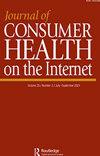新冠肺炎社交媒体帖子的生态模型分析
IF 0.7
Q4 PUBLIC, ENVIRONMENTAL & OCCUPATIONAL HEALTH
引用次数: 0
摘要
摘要本研究调查了社交媒体上与新冠肺炎相关的预防和应对内容。公开发布的社交媒体帖子按社会生态模型(SEM)和平台(Instagram、TikTok、Twitter)的级别进行了检查。使用系统随机抽样,从2020年3月到2020年6月,使用新冠肺炎标签收集了1579篇公共帖子。其中包括663篇关于新冠肺炎的英文帖子。内容按平台、降低风险的策略、应对压力的策略和SEM级别进行编码。总的来说,41.18%的帖子提到了降低风险的策略。很少有帖子提到应对策略(5%)。略低于一半的帖子专注于个人层面(42.1%)。每个帖子中提到的降低风险的策略和SEM水平因平台而异。研究结果表明,社交媒体可以深入了解公众收到的健康信息类型,以及公众降低风险和应对策略;然而,各平台之间存在差异。本文章由计算机程序翻译,如有差异,请以英文原文为准。
An Ecological Model Analysis of COVID-19 Social Media Posts
Abstract This study examined prevention and coping content related to COVID-19 on social media. Publicly available social media posts were examined by levels of the social ecological model (SEM) and by platform (Instagram, TikTok, Twitter). Using systematic random sampling, 1579 public posts were collected from March 2020 to June 2020 using COVID-19 hashtags. Of these, 663 posts written in English about COVID-19 were included. Content was coded by platform, strategies for reducing risk, strategies for coping with stress, and SEM level(s). In total, 41.18% of the posts mentioned a strategy for reducing risk. Few posts mentioned coping strategies (5%). Slightly less than half of the posts focused on the individual level (42.1%). Both the strategies mentioned for reducing risk and SEM levels referenced in each post varied significantly by platform. Results suggest that social media may provide insight into the type of health information the public receives as well as the public’s strategies for reducing risk and coping; however, there is variation among platforms.
求助全文
通过发布文献求助,成功后即可免费获取论文全文。
去求助
来源期刊

Journal of Consumer Health on the Internet
PUBLIC, ENVIRONMENTAL & OCCUPATIONAL HEALTH-
CiteScore
1.30
自引率
12.50%
发文量
32
期刊介绍:
The Journal of Consumer Health on the Internet is the only professional peer-reviewed journal devoted to locating consumer health information via the Internet. In this journal librarians and health information providers describe programs and services aimed at helping patients and the general public find the health information they need. From the Editor: "Studies have shown that health information is one of the major reasons that people worldwide access the Internet. As the amount of health information on the Web increases exponentially, it becomes critical that librarians-including public and medical librarians-be knowledgeable about what is available online and be able to direct users to reliable, accurate, quality information."
 求助内容:
求助内容: 应助结果提醒方式:
应助结果提醒方式:


